Summary
Dear sed-DNA enthusiasts,
Welcome to our April 2025 newsletter! You can find below the new papers and preprints published over the last month, and two new postdoc positions. Also note that the deadline for abstract submission for the IPA-IAL conference has been extended until the end of this month (30th of April).
Another major news this month is that we are expanding the organising board! Warm welcome to Scarlett Zetter, Vilma Perez, and Aloïs Réveret, you can read more about them on the tab dedicated to our boards.
Wishing you a great month of April,
The organising board
New papers
Siwei Yu et al., (2025) published "Temporal dynamics of biodiversity in benthic macroinvertebrate communities from a 140-year sedimentary DNA record and their driving mechanisms" in Ecological Informatics.
Siwei Yu et al., (2025) published "Climate warming and nutrient enrichment destabilize plankton network stability over the past century" in Communications Earth & Environment.
Jacob Thomson-Laing et al., (2025) published "Exploring the historical presence of kākahi (freshwater mussel) in lakes using sedimentary ancient DNA" in Inland Waters.
Jamie Wood et al., (2025) published "Sedimentary DNA insights into Holocene Adélie penguin (Pygoscelis adeliae) populations and ecology in the Ross Sea, Antarctica" in Nature Communications.
Kyosuke Kitabatake et al., (2025) published "Sedimentary DNA is a promising indicator of the abundance of marine benthos: Insights from the burrowing decapod Upogebia major</i>" in PLoS ONE.
Yanlin Li et al., (2025) published "Sediment eDNA reveals damming triggered changes in algal and fish communities at the Three Gorges Reservoir in China" in Environmental Research.
Tianliang He et al., (2025) published "Thousands-years-old deep-sea DNA viruses reveal the evolution of human pathogenic viruses" in the Journal of Advanced Research.
Jotaro Urabe et al., (2025) published "Reconstruction of Marimo Population Dynamics Over 200 Years Using Molecular Markers and Fossil Plankton Remains" in Environmental DNA.
Preprints
Alexandra Schmidt et al., (2025) made the preprint "Multi-millennial genetic resilience of Baltic diatom populations disturbed in the past centuries" available on bioRxiv.
Nikolay Oskolkov et al., (2025) made the preprint "Disinfecting eukaryotic reference genomes to improve taxonomic inference from ancient environmental metagenomic data" available on bioRxiv.
Yi Wang et al., (2025) made the preprint "Microbial sedimentary DNA from a cultural landscape disentangles the impacts of humans and nature over the past 13.5 thousand years" available on bioRxiv.
Rikai Sawafuji et al., (2025) made the preprint "From bones to sediments: ancient human DNA from open-air archaeological sites" available on bioRxiv.
Renxing Liang et al., (2025) made the preprint "Traits enabling persistence of living Promethearchaeota in marine sediments frozen for over 100 kyr" available on bioRxiv.
Andrew Tighe et al., (2025) made the preprint "Ancient sedimentary DNA reveals a more biodiverse ancient Ireland" available on ResearchSquare.
New Positions
A Postdoc position in ancient environmental genomics at the University of Copenhagen. This project will explore the relationship between environmental changes and human demographics, disease load, and site histories by analysing ancient environmental DNA (eDNA). By extracting DNA from various archaeological contexts, including soil monoliths and discrete samples from around Europe, the study aims to reconstruct past environments and assess their impact on human populations. The project seek to pioneer the use of ancient metagenomes to address standing archaeological questions in collaboration with researchers across most of Europe. Through advanced techniques like deep shotgun metagenomics, this work seeks to enhance our understanding of anthropogenic environments in Western Eurasia. Funding is for two years, start date as soon as possible, at the Centre for Ancient Environmental Genomics, Globe Institute, UCPH, in Copenhagen.
Qualifications & Skills:
- A background in genetics, bioinformatics or like.
- Experience with ancient DNA analysis.
- Strong analytical skills and an interest in interdisciplinary research.
- Ability to work both independently and collaboratively in an international research environment.
If you are interested, send your questions or your CV directly to Mikkel (Asst Prof. Mikkel Winther Pedersen, mwpedersen@sund.ku.dk).
A Postdoc position at the Krabbenhoft Aquatic Ecology lab in the Department of Biological Sciences (University at Buffalo). The prospective postdoc will work on an NSF-funded interdisciplinary project to explore rapid climate and ecosystem change in Southeast Alaska, by combining paleoclimate proxies and models. The position will be based in the Biological Sciences Department at the University at Buffalo and will collaborate closely with grant partners, including multiple graduate students, another postdoctoral researcher, and the four PIs (Charlotte Lindqvist, Jason Briner, Elizabeth Thomas, and Corey Krabbenhoft). Start date in summer 2025. Please note this is not specifically a sedaDNA position, it is addressed to paleoclimatologists and paleoecologists at large. The prospective postdoc will get to work with a fun-loving and exciting research team! Those interested check out the postdoc offer and directly contact Dr. Corey Krabbenhoft.
Conference announcements
Please note that the deadline to submit an abstract to the IAL-IPA joint meeting has changed! New deadline is now the 30th of May, 2025.
The IAL-IPA joint meeting 2025 will be in Aix les Bains, France from October 6-10, 2025. The conference has three sessions that could be of interest:
- "II-1-New perspectives and findings in paleolimnology using environmental ancient DNA" organised by Kathleen R. Stoof-Leichsenring, Laura S. Epp, Charline Giguet-Covex, Maïlys Picard, Stanislav Jelavić, Antony G. Brown.
- "III-7-The coevolution of environments and biodiversity" organised by Leighton King, Pavani Misra, Irene Gregory-Eaves.
- "IV-1-Biogeochemical cycles in the subsurface: molecular and mineral proxies for integrated lacustrine studies" organised by Lotta Purkamo, Maïlys Picard, Aurèle Vuillemin, and Camille Thomas.
Contact Maïlys Picard at mailys.picard@umu.se if you want to announce something to the society, or if you have a recent paper that you would like to advertise in the newsletter.
